And a very Happy Valentine’s Day, dear readers! Whether you are the type of person who buys heart-shaped confetti and cuts out little silhouettes of cupids, or…not, I thought today would be an ideal one to share with you a little something I learned this weekend.
Did you know that February is InCoWriMo?

InCoWriMo stands for International Correspondence Writing Month, a month-long celebration of “vintage social media”, or letter-writing. The goal, as stated on the InCoWriMo website, is to “Hand-write and mail/deliver one letter, card, note or postcard every day during the month of February.” The goal of the project is to celebrate the beauty of hand-writing letters, and the wonderfully personal bonds that are built through the process of letter-writing.
Now, I only found out about InCoWriMo a few days ago when a friend of mine, who is a participant, told me about in (in a letter, as a matter of fact). And I love it. As a dedicated letter-writer myself, I find that sitting down and crafting a letter to someone is something that benefits us both. In a communication-heavy world, we tend to say things quickly, more eager to get the information to another person. But letter-writing gives you the time to think about how you want to say something, and why it is important to say something. Also, I really like thinking about the person to whom I am writing–it makes me feel a lot closer to them than shooting off a text.
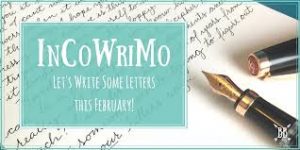 Unfortunately, I only learned about this great project halfway through the shortest month of the year, but that is no reason not to get started anyway. And today, I would encourage you to send a letter to someone you love, as well. The strict rules of InCoWriMo state that letters have to be hand-written, but I know that’s not easy for everyone. So if you’d like to type, or dictate, or even sketch, we won’t tell. And if you are looking for someone to whom to send a letter, InCoWriMo has also collected a list, which includes pen manufacturers, CEO’s, J.K. Rowling, and Michael Phelps, who are all eager to receive a letter from you. So why not give it a try. Today, of all days, is a good one to tell someone you think they’re worthy of a letter. So is tomorrow, as a matter of fact. As Heloise, a scholar, Abbess, and stellar letter-writer of the Middle Ages wrote to her love, Peter Abelard, “…what cannot letters inspire? They have souls; they can speak; they have in them all that force which expresses the transports of the heart; they have all the fire of our passions, they can raise them as much as if the persons themselves were present; they have all the tenderness and the delicacy of speech, and sometimes even a boldness of expression beyond it…We may write to each other; so innocent a pleasure is not denied us.”
Unfortunately, I only learned about this great project halfway through the shortest month of the year, but that is no reason not to get started anyway. And today, I would encourage you to send a letter to someone you love, as well. The strict rules of InCoWriMo state that letters have to be hand-written, but I know that’s not easy for everyone. So if you’d like to type, or dictate, or even sketch, we won’t tell. And if you are looking for someone to whom to send a letter, InCoWriMo has also collected a list, which includes pen manufacturers, CEO’s, J.K. Rowling, and Michael Phelps, who are all eager to receive a letter from you. So why not give it a try. Today, of all days, is a good one to tell someone you think they’re worthy of a letter. So is tomorrow, as a matter of fact. As Heloise, a scholar, Abbess, and stellar letter-writer of the Middle Ages wrote to her love, Peter Abelard, “…what cannot letters inspire? They have souls; they can speak; they have in them all that force which expresses the transports of the heart; they have all the fire of our passions, they can raise them as much as if the persons themselves were present; they have all the tenderness and the delicacy of speech, and sometimes even a boldness of expression beyond it…We may write to each other; so innocent a pleasure is not denied us.”
And if you need some ideas, here are a few letters from history. It’s become a little Free For All tradition to share famous love letters on this day, but this time around, I tried to stick to the informal, or the unconventional, to show that “love letters” can take any kind of form you might like or need:

Here is a cartoon written by E.C. Segar, the creator of Popeye to his wife, Myrtle, while he was traveling for business, entitled “Gee!! I wish Myrt was here”:
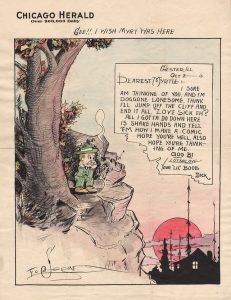
This short, but perfectly-worded note from Mark Twain to his wife, Olivia Louise Langdon:
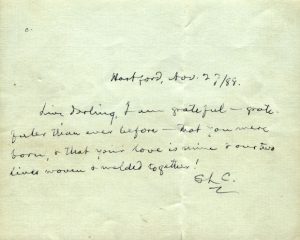
The text of the letter: Livy Darling, I am grateful–grate-fuller than ever before–that you were born, & that your love is mine & our two lives woven & melded together! –SLC (Samuel Longhorn Clemens)
And, finally, this birthday note from Johnny Cash to June Carter Cash on her 65th birthday, in 1994 (which was voted the greatest love letter of all time in a 2005 poll):
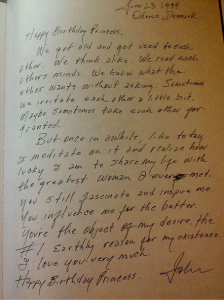
June 23 1994
Odense, Denmark.
Happy Birthday Princess,
We get old and get used to each other. We think alike. We read each others minds. We know what the other wants without asking. Sometimes we irritate each other a little bit. Maybe sometimes take each other for granted.
But once in awhile, like today, I meditate on it and realize how lucky I am to share my life with the greatest woman I ever met. You still fascinate and inspire me. You influence me for the better. You’re the object of my desire, the #1 Earthly reason for my existence. I love you very much.
Happy Birthday Princess.
John

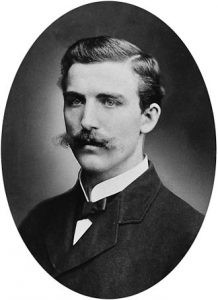 Let me start by telling you a little bit about the
Let me start by telling you a little bit about the
 I personally adore the Wellcome because of it’s 1) incredible library, which has allowed me to write my dissertation, it’s 2) stupendous archive, which is also helping me with The Dissertation, and 3) Their ridiculously welcoming, air-conditioned building (I don’t know if Sir Wellcome thought of central air, but if he did, I tip my proverbial hat to him). There is a section of their library with chaise lounges and beanbags, for pity’s sake. And the security guards encourage you to wander around and learn all you can–and don’t mind that you have a cold and look like you got hit by a truck. That, my friends, is an institution dedicated to learning.
I personally adore the Wellcome because of it’s 1) incredible library, which has allowed me to write my dissertation, it’s 2) stupendous archive, which is also helping me with The Dissertation, and 3) Their ridiculously welcoming, air-conditioned building (I don’t know if Sir Wellcome thought of central air, but if he did, I tip my proverbial hat to him). There is a section of their library with chaise lounges and beanbags, for pity’s sake. And the security guards encourage you to wander around and learn all you can–and don’t mind that you have a cold and look like you got hit by a truck. That, my friends, is an institution dedicated to learning.
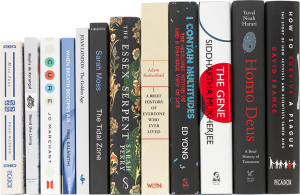
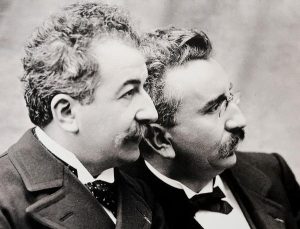
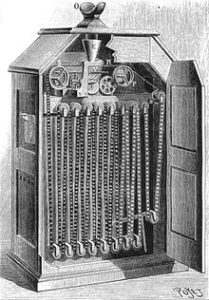
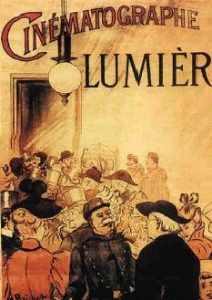 The Lumiere Brothers debuted their invention at the Salon Indien du Grand Café in Paris on December 28, 1895. In an evening of technological and cinematographic history, they screen ten films, each less than a minute long (each film was approximately 17 meters long). The program consisted of films shot in and around Paris by the brothers themselves, though it is thought that they used
The Lumiere Brothers debuted their invention at the Salon Indien du Grand Café in Paris on December 28, 1895. In an evening of technological and cinematographic history, they screen ten films, each less than a minute long (each film was approximately 17 meters long). The program consisted of films shot in and around Paris by the brothers themselves, though it is thought that they used 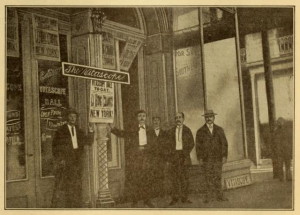 The effect their invention had on popular culture was immediate and enormous. People flocked to see screenings across Europe as the Lumieres took their invention on tour. The Lumieres opened theaters (which they called cinemas) in 1896 to show their work and sent crews of cameramen around the world to screen films and shoot new material. New Orleans’ Vitascope Hall–the first cinema in the United States–opened that same year (admission was 10 cents), and The New York Times published its first film review in 1909. However, neither brother believed that ‘cinema’ had a future, and decline to sell their camera or disseminate their technology, which didn’t earn them many friends. Though they would go on to develop new kinds of photographic color plates that revolutionized photography, their involvement in film history was quite brief…but no less important for that.
The effect their invention had on popular culture was immediate and enormous. People flocked to see screenings across Europe as the Lumieres took their invention on tour. The Lumieres opened theaters (which they called cinemas) in 1896 to show their work and sent crews of cameramen around the world to screen films and shoot new material. New Orleans’ Vitascope Hall–the first cinema in the United States–opened that same year (admission was 10 cents), and The New York Times published its first film review in 1909. However, neither brother believed that ‘cinema’ had a future, and decline to sell their camera or disseminate their technology, which didn’t earn them many friends. Though they would go on to develop new kinds of photographic color plates that revolutionized photography, their involvement in film history was quite brief…but no less important for that. 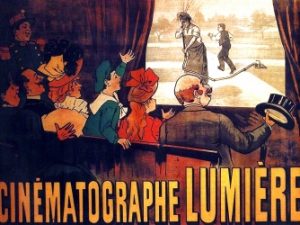
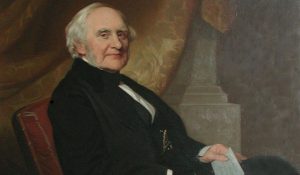
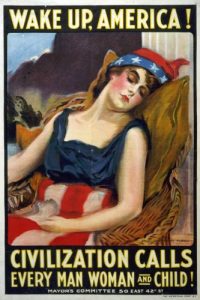
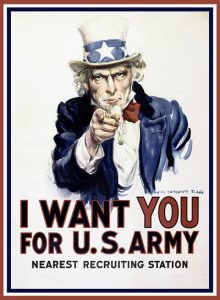
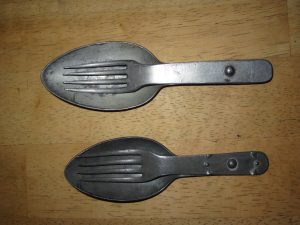

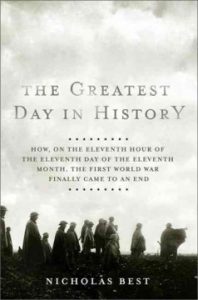 The Greatest Day in History
The Greatest Day in History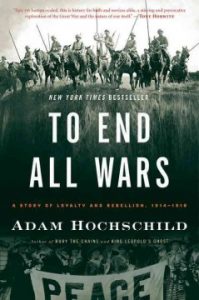 To End All Wars : A Story of Loyalty and Rebellion, 1914-1918
To End All Wars : A Story of Loyalty and Rebellion, 1914-1918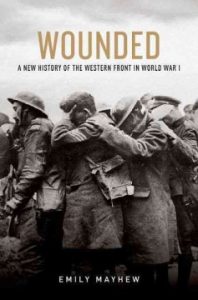 Wounded: A New History of the Western Front in World War I
Wounded: A New History of the Western Front in World War I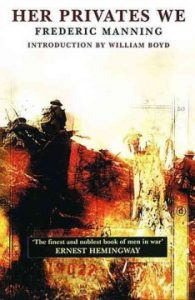 Her Privates We:
Her Privates We: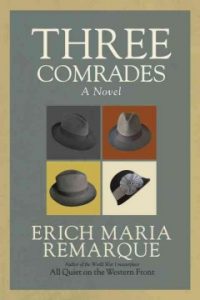 Three Comrades
Three Comrades

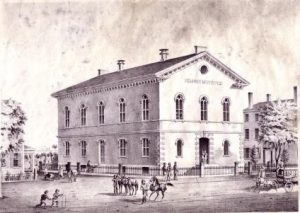
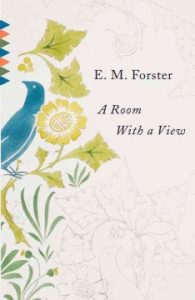
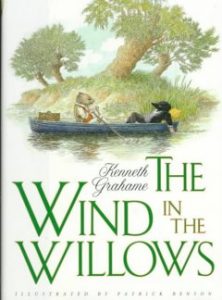 The Wind in the Willows
The Wind in the Willows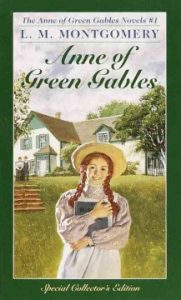 Anne of Green Gables
Anne of Green Gables The Tale of Jemima Puddle-Duck
The Tale of Jemima Puddle-Duck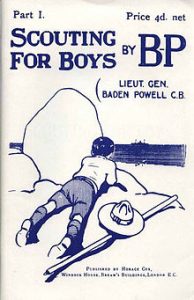 Scouting for Boys
Scouting for Boys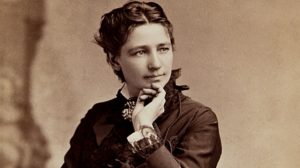
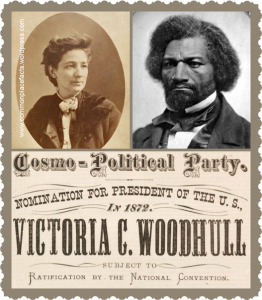 Woodhull was born in Ohio, and though she had no formal education, she certainly had a remarkable mind and impressive will. She made her first fortune as a “magnetic healer” (not precisely a legitimate form of medicine, but one that was incredibly popular in the mid-19th century). During this time, she also met Cornelius Vanderbilt, who became a lifelong friend, a constant source of financial support, and very nearly her brother-in-law (rumors had it that he had proposed to Tennie, but his family refused to allow him to marry her). It was her work as a medium that allowed Victoria to fun her brokerage form and newspaper, and the intensity of her convictions that won her national attention. Woodhull was a champion of women’s legal, voting, and sexual rights, which polarized not only the women’s suffrage movement, but society in general. She was also an advocate for equality between races, as well– when nominated for president, nominated Frederick Douglass in turn for her running-mate.
Woodhull was born in Ohio, and though she had no formal education, she certainly had a remarkable mind and impressive will. She made her first fortune as a “magnetic healer” (not precisely a legitimate form of medicine, but one that was incredibly popular in the mid-19th century). During this time, she also met Cornelius Vanderbilt, who became a lifelong friend, a constant source of financial support, and very nearly her brother-in-law (rumors had it that he had proposed to Tennie, but his family refused to allow him to marry her). It was her work as a medium that allowed Victoria to fun her brokerage form and newspaper, and the intensity of her convictions that won her national attention. Woodhull was a champion of women’s legal, voting, and sexual rights, which polarized not only the women’s suffrage movement, but society in general. She was also an advocate for equality between races, as well– when nominated for president, nominated Frederick Douglass in turn for her running-mate.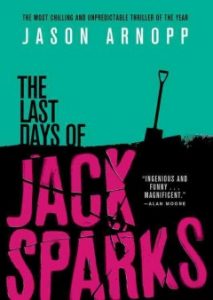 The Last Days of Jack Sparks
The Last Days of Jack Sparks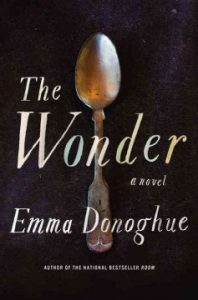 The Wonder
The Wonder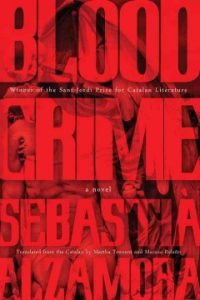 Blood Crime
Blood Crime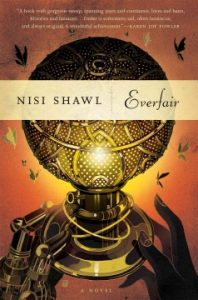 Everfair
Everfair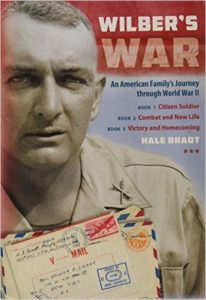 Wilber’s War : An American Family’s Journey Through World War II
Wilber’s War : An American Family’s Journey Through World War II